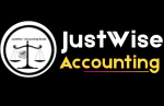Why Setting Up a Chart of Accounts Requires Expertise and Attention to Detail
Justwise-Accounting
2 min read


Understanding the Chart of Accounts: A Guide for Business Owners
What is a Chart of Accounts?
A Chart of Accounts is a structured list of all accounts used in a business’s financial records. It acts as a foundation for bookkeeping, accounting, and financial reporting, ensuring transactions are categorized correctly.
Each account in the Chart of Accounts is assigned:
A name (e.g., "Accounts Receivable," "Office Supplies")
A unique account number to identify it in financial systems
A classification within assets, liabilities, equity, revenue, or expenses
This structure helps businesses organize and track financial activities, making reporting more accurate and efficient.
How the Chart of Accounts Works in Double-Entry Accounting
The double-entry accounting system, developed by Luca Pacioli in the 15th century, is the foundation of modern bookkeeping. This system ensures financial accuracy by recording every transaction in two accounts simultaneously:
Debits, which increase assets or expenses
Credits, which increase liabilities, equity, or revenue
For example, if a business purchases office equipment for $1,000, the transaction would be recorded as:
Debit: Office Equipment ($1,000)
Credit: Cash ($1,000)
This process ensures that the accounting equation remains balanced:
Assets = Liabilities + Equity
Why Businesses Need a Chart of Accounts
Without a structured Chart of Accounts, financial records can become disorganized and difficult to manage, leading to:
Inaccurate financial reporting
Misclassification of expenses and revenue
Compliance issues with tax regulations
A well-maintained Chart of Accounts allows businesses to:
Track financial transactions systematically
Generate clear financial statements
Ensure smooth tax reporting and compliance
Creating and Maintaining a Chart of Accounts: Why It’s Complex
Setting up a Chart of Accounts requires:
Understanding business operations to create relevant account categories
Structuring accounts correctly for tax and financial reporting
Ensuring compatibility with accounting software
Even for experienced professionals, creating a Chart of Accounts takes time and careful planning to align with financial regulations and business needs.
Why Professional Assistance is Recommended
Some business owners attempt to create a Chart of Accounts themselves, but errors can lead to financial mismanagement and reporting inaccuracies. Hiring a professional ensures:
Accounts are properly classified to meet tax and compliance standards
Financial records are structured for accuracy and efficiency
Future accounting needs are accounted for, reducing costly mistakes
While professional fees may seem high at the outset, a well-organized Chart of Accounts saves time, prevents financial errors, and improves reporting accuracy over time.
Should Business Owners Hide Financial Information from Accountants or Bookkeepers?
Transparency is essential when working with financial professionals. Accountants and bookkeepers rely on accurate and complete information to:
Properly set up financial records
Ensure tax compliance
Provide valuable business insights
If business owners withhold financial details, it can lead to misclassified transactions, tax penalties, and inaccurate reporting, affecting business performance.
Why Patience is Required in Setting Up a Chart of Accounts
Creating a Chart of Accounts is not a quick process. It involves:
A deep analysis of business operations
Customization to meet industry-specific needs
Integration with accounting software and reporting systems
A well-structured Chart of Accounts pays off in the long run, providing financial clarity and ensuring compliance with tax laws.
Final Thoughts: Is a Chart of Accounts Worth the Investment?
A properly designed Chart of Accounts is essential for financial success. While setting it up requires expertise, time, and patience, it ensures:
Accurate financial tracking
Smooth tax compliance
Better financial decision-making
Investing in professional assistance for Chart of Accounts setup prevents costly mistakes and ensures long-term financial stability.
" If you need assistance with setting up a Chart of Accounts or improving your financial processes, consult a professional accountant or bookkeeper for tailored guidance."
Stay in Touch
© 2025 JustWise Accounting. All rights reserved. ABN 85 581 353 385
⚠️ We respect your privacy. Unsubscribe anytime. (under subscribe button)
Serving Australia-wide
Justwise acknowledge the Traditional Owners of the lands where we operate and pay respect to Elders past and present.
